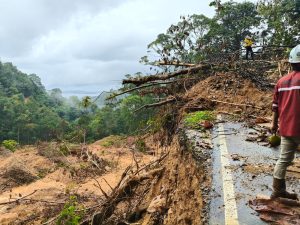Jakarta – Think tank Energy Shift Institute (ESI) warned Indonesian coal companies the risk of being caught in a structural crisis as the global trend towards fossil fuels declines. ESI stated that the country’s projected coal production of 836 million tonnes by 2024 and the industry’s total profit of USD 31.4 billion over the past five years could change drastically soon. According to ESI, without a serious diversification strategy,
“The current high profits enjoyed by the coal sector are only a temporary momentum, not a reflection of structural strengths,” said Hazel Ilango, ESI Principal and leader of the Indonesia coal transition study, at the launch of their latest report on Tuesday, 17 June.
Between 2019 and 2023, the coal sector only lost out to banking in terms of profitability. However, ESI notes signs that this golden era will not last long. Coal prices, while still above pre-pandemic levels, have fallen more than 50 per cent since their peak in 2022. This has coincided with increased international pressure to abandon high-emission energy sources.
Undeniably, coal is still the backbone of Indonesia’s economy. Its contribution to national GDP reaches 3.6%, and even up to 40% in East Kalimantan. In South Sumatra and South Kalimantan, similar contributions stand at 25% and 15% respectively.
High risk, high concentration and export dependency
ESI’s study of 12 Indonesian coal companies reveals that the industry structure is highly centralised, with US$31.4 billion in profits generated by just 28 companies. Meanwhile, exports to China and India dominate the market, accounting for 63% of total coal exports in 2023.
“Business models that are highly dependent on one commodity and key markets like this are very vulnerable. Changes in policy or demand from one country can have a big impact,” explained Putra Adhiguna, ESI researcher and co-author of the report.
Despite the risks, ESI believes that the industry still has opportunities to manoeuvre. The majority of mines in Indonesia are mature assets with low capital investment requirements, and coal companies also have an average debt-to-equity ratio of only 21%, which is significantly healthier than the global average of 101%.
“With strong cash flows and relatively stable market confidence, Indonesia is ideally positioned to begin a structured transition. But this window will not be open for long,” said Putra.
Government considered counterproductive
Unfortunately, ESI also highlighted that several government policies have made the transition more difficult, including domestic market obligations (DMO), retention of export foreign exchange (DHE), and higher royalty increases compared to other commodities. This is considered to encourage companies to pursue short-term profits rather than design a sustainable future.
“Companies will not move with just an appeal. Concrete incentives are needed for the sector to shift to clean energy and green industries,” Putra said.
ESI notes that only a handful of companies have begun to explore renewable energy, carbon efficiency or industrial diversification projects. Most are still in the early exploration stage, with no significant changes in their business models.
Hazel Ilango warns that companies that choose to wait until coal reserves are exhausted are taking greater long-term risks. “It’s not just about emissions or the environment, it’s also about business resilience,” she said.
He added that the global energy landscape has been undergoing a systematic shift, and Indonesia cannot afford to turn a blind eye. In China, for example, a major buyer of Indonesian coal, three-quarters of the new electricity growth is already supplied by clean energy. (Hartatik)
Banner photo: Pexels.com














